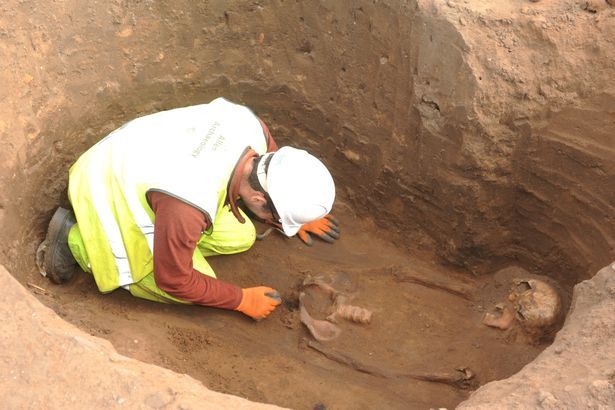Archeologists find 60 Roman British skeletons buried in a field
On the site of a Roman cemetery in Lincolnshire, archeologists found the remains of 60 human burials.
Men, women and children were discovered and a tomb even included a lamb leg for the deceased to take them to the afterlife.
Grave goods found by Lincoln-based Allen Archaeology also include pots, bracelets, and bangles. The burials are believed to date from the 2nd to the 4th century AD and some were in coffins and others wrapped in shrouds.

Three Roman villas or farmsteads have previously been found near the dig site off North Street, Winterton, which is just outside Scunthorpe. And it was Roman tradition to place burial grounds outside of towns and villages to avoid pollution.
The Romans founded a settlement nearby called Ad Abum, at modern-day Winteringham on the south bank of the River Humber.
This was where the Roman Road between London and Lincoln – Ermine Street – ended.

Travelers in Roman times would have crossed the river at low tide or by ferry to Brough for the road to York and as far north as Hadrian’s Wall.
The cemetery site is set to be developed as 135 homes by house-builder Keigar Homes, pending planning permission.
Natasha Powers, senior manager at Allen Archaeology, said: “In the previous phases of work, we did the geophysical survey and a trench evaluation in 2014/15.
“We could not tell the extent of the cemetery. We found it seemed larger than we expected.”We know some of the burials were in coffins. One of the skeletons was buried with a whole leg of lamb.”We have men, women and children out of these graves. We have found a little pot and some bracelets and bangles.
We have two different types of burial rites – a lot of substantial coffin burials and people in shrouds.”Does this represent different dates, personal choice or different groups of people? We think it is date-related as the rites have changed.
“It’s very organized burials in rows, it’s an enclosed area and it’s clearly a cemetery.”The team will be on site for a few more weeks. Finds will be fully analyzed and a report produced.

Natasha added: “Where the people buried here related and where had they come from? We have a chance to look at some of the population of the area in Roman times and we now have some information on what would have been growing in the fields around here.”





